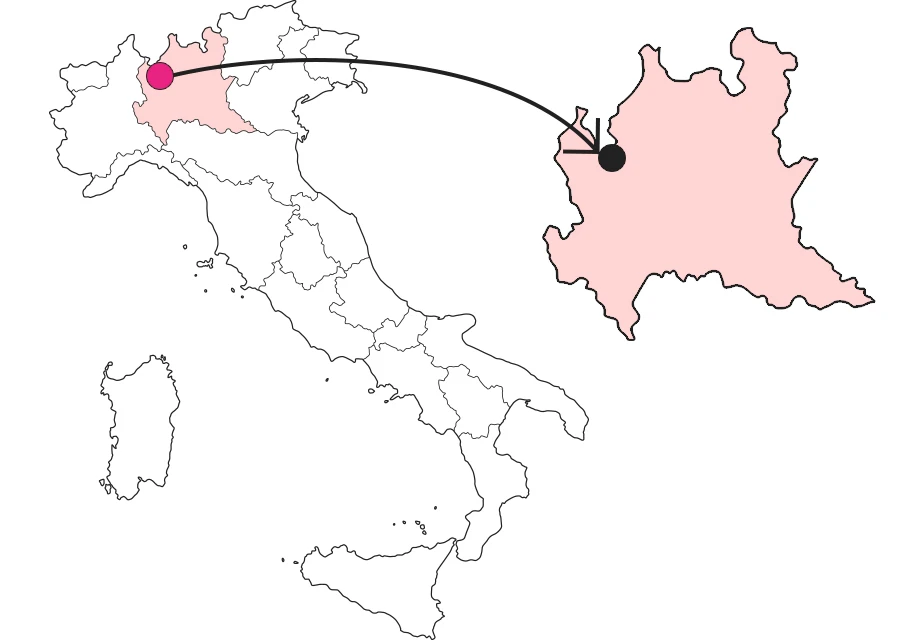










The scagliola of the Intelvi Valley
A story of art, ingenuity and craftsmanship



Where

At San Tommaso to discover scagliola
In Cerano d'Intelvi, a beautiful Moltrasio stone bell tower draws attention to the church of San Tommaso, located on a cliff between the Ronco and Vercia streams, next to the Murtée spring. This very bell tower was once part of the castle of the Longobard queen Theodolinda, which is why it is also called Theodolinda's Tower. Of course, the village's connection with the queen is very intense, so much so that her crown was included in the municipal coat of arms, but it is inside the church that an important part of the village's cultural and historical heritage is discovered. Among the frescoes, paintings and stucco work, the eye inevitably falls on some antependiums with elaborate and sinuous colored decorations on a dark background. To the untrained eye they might look like marble works, but the truth is that these panels were made from scagliola, a material worked with absolute mastery by Intelvese artists.
How scagliola was created
The technique has been perfected for centuries, and marble has very little to do with it: scagliola is a product that comes from mixing gypsum, fired and ground very finely, with powders of natural earths found locally. The gypsum is soaked with water produced by the maceration of animal organic elements (skin, isinglass) and mixed with black powder of vine charcoal (vine black) or soot (smoke black). This mixture is spread in a thin layer on a rough chalk substrate. Color engraving is achieved by hollowing out parts of the decoration and filling the hollows with scagliola mixes of various colors. The surface is then polished through the use of seven stones and finally, waterproofed with beeswax.
 Example of the typical symbolism: lilies, carnations and fruits in the scagliola frontal of San Giorgio fuori le mura in Ferrara
Example of the typical symbolism: lilies, carnations and fruits in the scagliola frontal of San Giorgio fuori le mura in FerraraThe symbols of scagliola
The scagliolist workshop applies the repeated use of fixed elements, such as frames and scrolls, into which mobile elements, such as flowers and garlands, and central devotional figures can be inserted. Each antependium sees the working collaboration of master and pupil, which is why it is always made by two authors. Returning to the church of St. Thomas, for example, in the first two chapels adjacent to the high altar, one can admire two antependiums depicting different symbols: vases filled with fruit, that is, offerings of good deeds; bunches of roses and lilies, a sign of purity; carnation flowers, a representation of Christ's love; garlands, like prayer rosaries, and cross-gemmed corals, a sign of noble sacrifice.
And it is by admiring these splendid works that one understands why the craftsmen and artists of Intelvi were in demand throughout Italy and even Europe, especially since they were not limited to the making of altarpieces: skilled in working stone and erecting buildings, the people of Intelvi are remembered as builders of churches and cathedrals of great historical importance.
From the Intelvi Valley to the conquest of Europe
In the Romanesque period, the "magistri comacini," were highly organized collectives of artisans, which included architects, masons, carpenters, sculptors, decorators, painters: the skills were very specific, but they moved in groups. From the age of 12 one could emigrate for work, together with the father or grandfather, for seasonal periods. Each village in the valley had specialist groups: stonemasons in Schignano, plasterers and scagliolists in Laino, decorators in Castiglione, set designers in Ponna. After all, the alpine and prealpine mountains with their valleys and transits allowed for a dense network of international relations since the time of the Lombards, when the people of Intelvi began to be recognized and respected as "magistri."
 Cerano d'Intelvi seen from above
Cerano d'Intelvi seen from aboveBetween the 15th and 18th centuries, scagliola was an expression of an artistic and naturalistic language, and represented the perennial praise of the spirit with the offering of flowers, colors, ribbons and stones. Everything in nature that is changeable, elusive and momentary becomes, with the technique of scagliola, engraved with vivid colors into a still and eternal element, as of stone. And it was precisely the ability to make the ephemeral eternal that led Pope Clement VII to replace silk altar frontals in churches with those made of scagliola. These beautiful works, moreover, could compete in beauty with marble inlays, but were much cheaper, allowing even less wealthy orders, such as the Capuchins, to embellish their churches. Little by little, scagliolists became established and made the fine elements of altars and tabernacles from scagliola, replacing slate stone and all manner of marble, considered a luxury for the mendicant orders. Intelvese scagliola had its widest development and use in the 18th century in altar frontals, small tables and tables, consolles, and much more, which spread throughout Europe, with decorative motifs devised or interpreted according to the manners of the time.
 Museum Entrance
Museum EntranceThe Museum of Stucco and Scagliola
The tradition of scagliola is so strong and rooted in the area that today a wing of the 17th-century Palazzo Pinchetti Perlasca is occupied by the Stucco and Scagliola Museum. Born in 1989 thanks to the creation and collection work of Professors Bruno Gandola and Floriana Spalla, he an artist from Cerano at the Brera Academy and she an art historian, it hands down to future generations the art and wisdom, which have always distinguished the intelvese craftsmen. Inside, in fact, the world of stucco and scagliola is explored in the round thanks to photographs depicting artisans at work, tools and materials used over the centuries and their evolution, and finally, unfailingly, some wonderful examples of works in scagliola and modern plastic stucco.
And that's how you come to the end of the journey, or at least, that's how it seems...in fact, the adventure has just begun because from now on, after discovering the amazing world of scagliola, you will find yourself here and there throughout Italy and Europe recognizing the hand of the talented artists of the Intelvi Valley!
Enter the Map of Italy's Undiscovered Wonders and find treasures where you least expect it... Inspire, Recommend, Share...
Contacts
Collections
It is part of the Land
The Map thanks:
In the Community
Enter the Map of Italy's Undiscovered Wonders and find treasures where you least expect it... Inspire, Recommend, Share...
Where

Contacts
Collections
It is part of the Land


